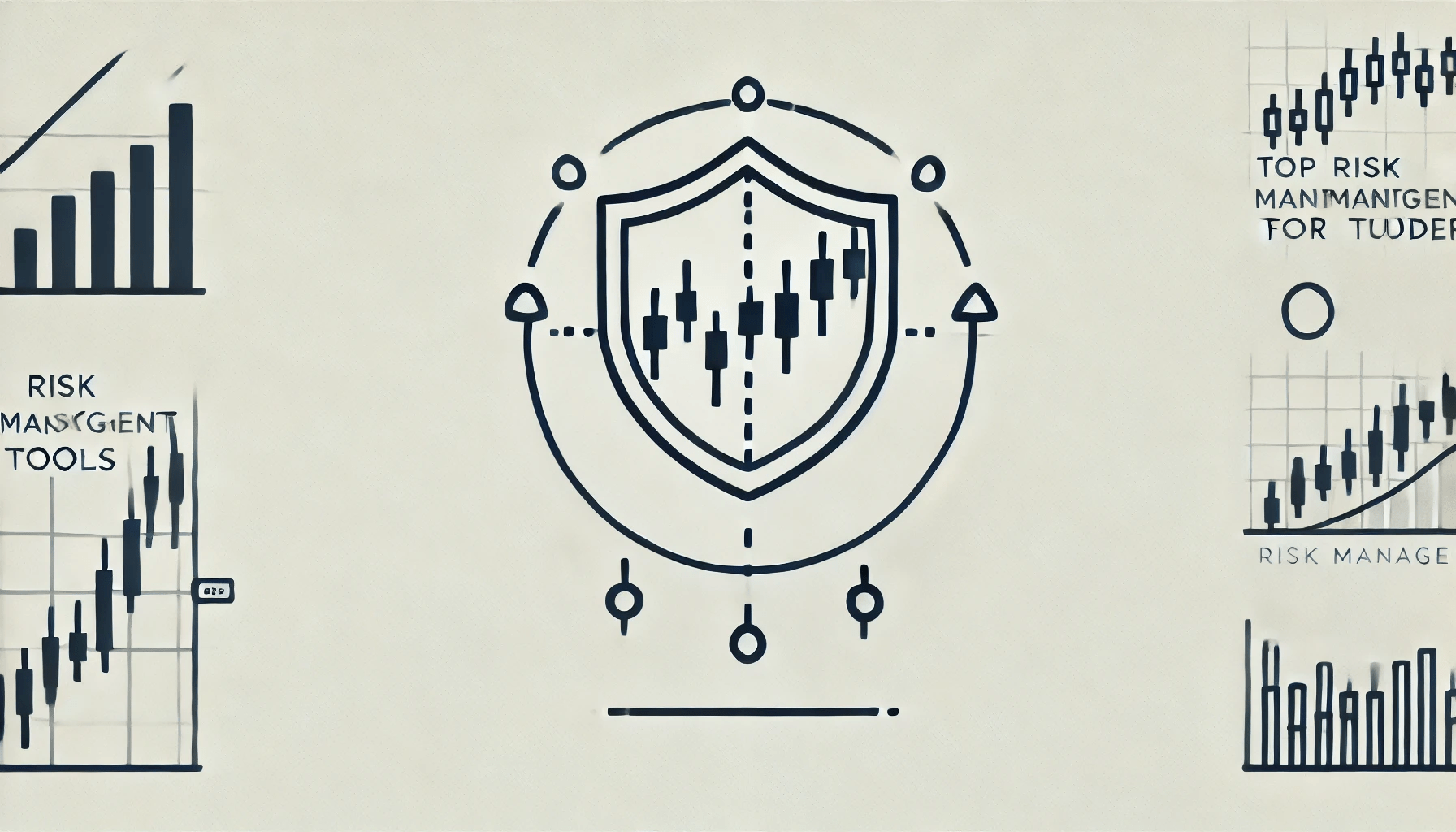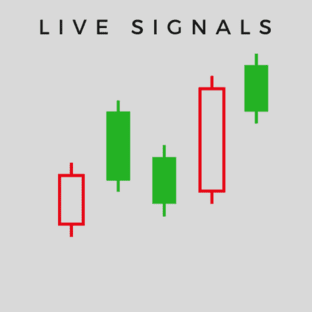Your cart is currently empty!
Options For Risk Management: Turning Volatility Into A Safety Net
In modern markets, risk does not come only from bad companies or weak economies. It comes from volatility itself. Prices gap on news, correlations change suddenly, and events that everyone thought were “low probability” can arrive faster than expected. That is why serious traders and investors eventually ask a deeper question than “What should I buy?” They ask “How do I protect the downside while staying in the game?”
Options are one of the most powerful tools for doing exactly that. They let you reshape the payoff profile of your portfolio. You can cap losses, limit risk, reduce volatility, and sometimes even generate income while holding positions you believe in for the long term. Yet options also have a reputation for being complex or speculative, which discourages many people from using them as risk tools.
This page is designed to change that perception. It treats options first and foremost as instruments of risk management, not speculation. It explains the core logic behind protective puts, covered calls, collars, and spreads, and it connects that logic to practical, interactive tools that live on this page. The Option Payoff Simulator lets you drag strikes and expiries to see how payoff curves change. The Volatility Meter shows a live VIX chart with context for what rising volatility means for portfolio hedging. The Interactive Tutorial Video walks you through building your first collar in just a few minutes. The Risk-to-Reward Calculator gives an instant readout of the potential upside to downside ratio for a chosen put or spread.
When you put all of this together, options stop feeling like a mysterious side game and start feeling like a rational extension of how you already think about risk.

Why Options Belong In A Risk Management Toolkit
At the simplest level, every position you take in the market has three components. There is the entry price. There is the potential upside if things go well. There is the potential downside if things go against you. Without options, you control that risk primarily through position sizing and stop losses. Both are important, but they have limitations. Stops do not always hold during gaps. Position size alone cannot change the fact that a single share can go to zero.
Options introduce a new dimension. They allow you to define your worst case outcome in advance. If you hold a stock and buy a put at a certain strike, you know that no matter how far the stock falls, you have the right to sell at that strike. If you sell a covered call against a holding, you know that above a certain price your upside is capped but you have collected premium that cushions small declines. If you build a collar, you define both a floor and a ceiling for your outcome during the life of the options.
This is why many institutional investors treat options as insurance. Just as you insure your home even if you hope never to claim, you can insure your portfolio even if you hope never to use the protection. Insurance has a cost, and so does buying options. The question is not whether there is a cost. The question is whether that cost is justified by the reduction in risk and the peace of mind it brings.
The content on this page approaches options with that insurance mindset. The goal is not to find the most aggressive leverage, but to understand how to use options so that a single bad event does not undo years of disciplined investing. The Option Payoff Simulator, the Volatility Meter, the tutorial video, and the Risk-to-Reward Calculator all serve that purpose.

Time Decay, Gamma, And Life Of A Hedge
Every option is affected by time decay. As expiration approaches, the time value component of an option’s price erodes. This erosion is known as theta. For risk management, understanding time decay is crucial. A protective put that seems reasonably priced with three months to expiry will lose time value each day, especially if the underlying asset does not move significantly.
Understanding The Basic Building Blocks
Before using any interactive tools, it helps to revisit the basic building blocks of options risk. There are calls and puts. A call option gives you the right, but not the obligation, to buy an asset at a specified price, called the strike, before or on a specified expiration date. A put option gives you the right, but not the obligation, to sell the asset at a specified strike before or on expiration.
The price you pay for an option is called the premium. If you buy an option, the maximum you can lose is the premium. If you sell an option, you receive the premium but take on the obligation associated with the contract. That obligation carries risk which can be large or limited depending on the structure.
Options can be combined into spreads. You might buy one option and sell another at a different strike or expiry. This creates a defined range of outcomes. For example, a vertical spread might limit both your upside and downside. A collar combines a long stock position with a long put and a short call, creating a channel within which your outcomes are constrained.
Whenever you build or analyze any of these structures, you are really drawing a payoff curve. The curve shows how much you would gain or lose at expiration for each possible underlying price. In the early stages of learning options, drawing those curves by hand is instructive. Over time, a graphical tool like the Option Payoff Simulator can save time and help you explore a wider range of scenarios.
Advanced Protective Structures With Spreads
Once you are comfortable with basic protective puts, covered calls, and collars, the next step in options based risk management is to explore spreads. Spreads are combinations of long and short options that create more refined payoff profiles. They can help you reduce net premium outlay, limit exposure to extreme volatility, and tailor hedges to specific risk windows.
Start your journey to financial
success with astrodunia’s
One of the most practical structures for risk control is the vertical spread. A vertical put spread involves buying one put at a higher strike and selling another put at a lower strike with the same expiry. This creates a defined range of protection. Your maximum gain, which corresponds to the maximum protection, is the difference between the strikes minus the net premium paid. Your maximum loss is limited to that net premium.
Option Payoff Simulator: Seeing Risk Shapes Instead Of Guessing
The Option Payoff Simulator on this page exists to make payoff shapes tangible. Instead of thinking abstractly about what might happen if you buy a put or sell a call, you can drag strike and expiry controls and watch the curve adjust in real time. A long stock position shows a simple diagonal line that rises as the stock price rises and falls as the stock price falls. When you add a protective put, a kink appears in that line at the put strike, flattening the downside beyond that point.
This visual experience matters. Many people understand intellectually that a put limits downside, but they do not fully appreciate how sharply the risk profile changes until they see the curve. When you adjust the strike lower, the floor moves down and the cost of the option usually decreases. When you choose a higher strike, the floor moves up and the cost increases. By dragging the strike slider, you are really exploring the trade off between protection and premium in a more intuitive way than reading numbers on a screen.
The simulator is equally helpful for spreads. If you build a collar by adding a short call above the current price, the payoff line flattens on the upside at the call strike. You can see the corridor within which your returns are now constrained. If you construct a vertical put spread, buying one put and selling another at a lower strike, the simulator shows that your maximum loss is limited to the net premium paid and your maximum gain is capped.
This direct visual feedback is a powerful learning tool. Each time you explore a new structure, you see the exact trade off between unlimited and limited upside, between undefined and defined downside, and between higher and lower premiums. Over time, you develop an instinct for which shapes match your risk appetite in different market conditions.
Using Options Around Earnings And Macro Events
Some of the most intense bursts of volatility occur around earnings releases, central bank meetings, and major macro data such as employment or inflation reports. For investors and traders who hold significant equity exposure, these events present a recurring dilemma. Exiting positions to avoid risk may mean missing favourable moves, while staying unhedged exposes the portfolio to potentially large drawdowns.

Using Puts As Portfolio Insurance
One of the most straightforward ways to use options for risk management is the protective put. If you hold a stock or an index and are concerned about a potential drawdown, you can buy a put at a strike that defines the lowest price at which you are willing to see your position marked.
In practice, this means choosing a strike below the current price and an expiry long enough to cover the period of risk you care about. The closer the strike is to the current price, the more protection you have and the more expensive the option will be. The further away the strike is, the cheaper the option but the more loss you are allowing before the protection kicks in.
The Option Payoff Simulator makes this tangible. You can input your current holding, drag the strike to different levels, and see how the payoff curve changes. At a higher strike, the curve flattens earlier, showing that your worst case loss is limited. At a lower strike, the curve slopes down further before flattening, reflecting a larger potential loss before the put begins to offset it.
Protective puts are especially attractive when volatility is relatively low and the cost of insurance is modest. That is where the Volatility Meter on this page becomes relevant. By showing a live VIX chart with explanations, it gives you a sense of whether the market is currently complacent or fearful. When VIX is low, buying insurance tends to be cheaper. When VIX is elevated, insurance costs rise, and you may need to adjust your strategy or accept higher premiums.
In all cases, the key is to remember that a protective put converts an undefined downside into a defined one. You are paying a known premium to avoid an unknown loss. The question is how much that certainty is worth to you at any given time.
Covered Calls: Income And Gentle Risk Reduction
Another common risk management strategy is the covered call. If you hold a stock or an ETF that you are comfortable owning, but you also recognise that your upside is likely to be limited over a defined period, you can sell call options against your position.
By doing so, you collect premium. That premium acts as a buffer against small price declines. If the stock trades sideways or drifts down modestly, the premium can partially offset the loss. If the stock rises but remains below the call strike, you keep both your shares and the full premium. If the stock rallies above the strike, your upside is capped at the strike price plus the premium received, because you may be obligated to sell the shares at that level.
From a risk management point of view, a covered call converts some potential upside into certain income today. It does not protect against large declines, but it can reduce the effective entry cost of your position and smooth returns in range bound markets. The Option Payoff Simulator can show you this clearly. When you add a short call to a long stock position, the payoff curve flattens above the strike. Dragging the call strike higher or lower shows how much upside you are willing to sell in exchange for different levels of income.
Using covered calls in combination with protective puts forms the basis for another powerful structure: the collar.

If you are a long term investor
Use the Annual Letter 2026 to navigate macro cycles, sector rotation and multi-month themes across global assets, without reacting to every intraday swing.
Building Collars: Guided By An Interactive Tutorial
A collar is a combination of three elements. You own the underlying stock or ETF. You buy a put to define a floor for your losses. You sell a call to offset some or all of the cost of the put. The result is a band within which your returns will fall between now and option expiry. You have defined a minimum and maximum outcome for that period.
On this page, the Interactive Tutorial Video titled “Build your first collar in 3 minutes” walks you step by step through this process. It shows you how to choose a put strike that defines acceptable downside, how to choose a call strike that defines acceptable upside, and how to see the combined effect in the Option Payoff Simulator.
The video demonstrates that collars are not exotic. They are simply a structured way of saying “I am happy to limit my upside for a while if it means I can also limit my downside.” For long term investors, collars can be especially useful ahead of known risk events such as earnings announcements, elections, or major policy decisions. Rather than selling core positions and potentially triggering tax consequences or missing further upside, you can temporarily put a collar around the position to survive the event.
Watching the tutorial and then experimenting in the Option Payoff Simulator helps cement the concept. You will see how different combinations of strikes change the width and position of the collar, and you will appreciate how the call premium can offset the cost of the put. This is practical risk engineering, not theory.
The Volatility Meter: Understanding The Price Of Insurance
Options are sensitive to volatility. When markets expect larger price swings, option premiums rise. When markets expect calmer behaviour, premiums fall. The Volatility Meter on this page uses a live VIX chart to give you a read on implied volatility for the broad market and explains what different levels typically mean for portfolio protection decisions.
When the Volatility Meter shows a low VIX level, it indicates that option prices may be relatively inexpensive compared to historical norms. That can be an opportunity to buy protection before the market becomes stressed. In such periods, protective puts and long volatility strategies often have more favourable cost profiles.
When the VIX is high, it tells you that fear is already elevated. Protection is more expensive in absolute and relative terms. This does not mean you should never hedge during high volatility, but it does mean that you must be more selective. You might choose to use spreads instead of outright long options, combining long and short legs to reduce net premium. You may also rely more on position size and cash buffers when insurance is expensive.
The Volatility Meter is not a timing device. It is a context tool. It helps you answer questions such as whether you are paying an unusually high price for puts or whether you are leaving cheap insurance on the table by avoiding hedges during complacent periods. When you combine this context with the payoff shapes in the Option Payoff Simulator and the cost information implied by the Risk-to-Reward Calculator, you can make more informed decisions about when and how to use options.
Risk-to-Reward Calculator
Instantly see max loss, max profit, and risk-to-reward for a chosen put or put spread.
Assumes you are buying a standalone put. Max loss equals the premium paid. Max profit occurs if the underlying goes to zero.
Risk-to-Reward Calculator: Quantifying Trade-Offs
Every options structure involves trade offs between potential gain and potential loss. The Risk-to-Reward Calculator on this page exists to quantify those trade offs for you. When you enter a proposed strategy such as a single put, a spread, or a collar, the calculator estimates the maximum potential loss, the maximum potential gain within the structure, and the ratio between them.
Seeing this ratio in clear numerical terms is invaluable. For example, you might discover that a particular spread offers two units of potential gain for each unit of potential loss, while a different structure offers a much less favourable ratio. You can then decide whether the extra complexity or cost of one structure is justified by a better risk profile.
For protective strategies, the calculator also helps you see how much downside you are giving up for each dollar of premium spent. If a put reduces your maximum loss by a large amount relative to its cost, the risk-to-reward profile of your entire position improves. If an option is expensive relative to the risk reduction it provides, you may need to adjust the strike, expiry, or overall exposure.
By pairing the calculator with the Option Payoff Simulator, you get both a visual and numerical grasp of your strategy. The simulator shows you the payoff curve shape. The calculator puts numbers on the most important points of that curve. Together they turn vague intuition into clear analysis.
Meet Our Team
Get to know our dedicated team of experts. With a diverse range of skills and years of experience, we’re committed to providing you with the best market analysis and investment guidance.

Mr. Rajeev Prakash Agarwal
Founder
Expert in financial & personal astrology for 20 years+. Rajeev is a well-known astrologer based in central India who has a deep understanding of both personal and mundane astrology.

Mr. Shashi Prakash Agarwal
Technical Head
Shashi is a technology leader with a strong background in global business.He holds a B. Tech in Computer Science & MBA in Finance from Narsee Monjee Institute of Management Studies, one of the top B-Schools in India.
Integrating The Tools Into A Coherent Options Process
The true strength of this page lies in how its tools work together. Each one addresses a different aspect of risk management with options, but the greatest benefit comes when you use them in sequence as part of a consistent process.
You can begin with the Volatility Meter. Before designing any strategy, you glance at the VIX to understand the current pricing environment for options. If volatility is low, you might lean more toward buying protection. If volatility is high, you might consider spreads or partial hedges.
Next, you move to the Option Payoff Simulator. You design the structure you are considering, whether that is a protective put, a covered call, a collar, or a spread. By dragging strikes and expiries, you refine the shape until it matches your objectives. You make sure the payoff curve reflects the floor and ceiling you want for your risk.
Once you have a candidate structure, you turn to the Risk-to-Reward Calculator. You enter the details of the trade and check whether the numbers align with your risk appetite. If the maximum loss is too large relative to the potential gain, you adjust the structure or walk away. If the ratio is attractive and the cost is acceptable, you move forward.
If the structure involves constructing a collar, you can watch or rewatch the Interactive Tutorial Video to ensure that you have not missed a step. The video’s guidance, combined with the simulator and calculator, creates a feedback loop that reinforces good habits.
Finally, when you are ready to execute, you do so with the confidence that your decision is grounded in a clear view of volatility, a precise understanding of your payoff shape, and a quantified risk-to-reward profile.
Behavioural Benefits Of A Structured Options Approach
Risk management is not only about numbers. It is also about behaviour. Fear, greed, and confusion are magnified in volatile markets. A structured options process helps counter those emotions by giving you a framework you can return to under stress.
When markets fall quickly, it is easy to panic and sell everything at the worst possible moment. If you have already built protection through puts or collars, you can check the Option Payoff Simulator and remember that your downside is limited. This knowledge can prevent emotionally driven exits and allow you to stick to your longer term plan.
When markets rally sharply and greed takes over, there is a temptation to abandon hedges or to sell calls too aggressively. The Risk-to-Reward Calculator can remind you of the trade offs. It can show you how much upside you are giving up and how much risk you are accepting by changing your structure.
The Volatility Meter helps you avoid chasing insurance only when everyone else is panicking. When you know that VIX is already very high, you can weigh more carefully whether additional protection is worth its cost, and you can plan to add hedges during calmer periods in the future instead of only reacting during storms.
The Interactive Tutorial Video, meanwhile, lowers the mental barrier to entering protective strategies. When you know that building a collar or spread can be done step by step in a guided way, you are less likely to avoid hedging out of fear of doing it wrong.
Together, these behavioural benefits may be just as important as the direct financial benefits of the strategies themselves. A risk management system only works if you can actually follow it under pressure.
Why Choose Us ?
Astrodunia guides you through the market’s ups and downs with the help of planetary science. Our team of experts in financial astrology provide valuable insights and predictions to assist you in market wise investment decisions and navigate the global market with ease.

Market Forecasting
Experience the advantage of enhanced market predictions. Our unique approach combines traditional analysis with astrological insights for more accurate predictions and better investment opportunities.

Decades of Market Timing Expertise
For over 20 years, we’ve honed our skills in market timing within the stock market. Our extensive experience allows us to navigate market trends with precision and confidence.

Trusted by Discerning Investors
Our clients choose us for our proven track record of success and our commitment to providing them with the most reliable market insights. Join the ranks of satisfied investors who trust our expertise
Conclusion
Options for risk management are not about predicting the future. They are about controlling your response to whatever future arrives. By buying puts, you convert catastrophic downside into manageable loss. By selling covered calls, you trade some upside for income and smoother returns. By building collars and spreads, you define corridors within which your portfolio can move without threatening your long term goals.
The tools on this page are designed to make that control practical. The Option Payoff Simulator turns abstract payoffs into clear, visual shapes that you can adjust with a slider. The Volatility Meter puts each strategy into the context of current market fear or complacency. The Interactive Tutorial Video walks you through one of the most powerful protective structures, the collar, in just a few minutes. The Risk-to-Reward Calculator translates your ideas into numbers that tell you whether a trade’s potential upside justifies its potential downside.
When you use these elements together, options cease to be an intimidating side product and become a natural extension of your risk management mindset. You are no longer at the mercy of every market swing. Instead, you have tools to decide how much risk to take, where to place your floors and ceilings, and how much you are willing to pay for peace of mind.
In a world where volatility can appear without warning, that ability is not a luxury. It is a core part of being a resilient trader or investor.

Whether you’re a seasoned investor or just starting out, our financial astrology tools can be tailored to your specific investment goals. Gain valuable insights to achieve your financial aspirations.
Address
1301, 13th Floor, Skye Corporate Park, Near Satya Sai Square, AB Road, Indore 452010
+91 9669919000
© All Rights Reserved by RajeevPrakash.com (Managed by AstroQ AI Private Limited) – 2025